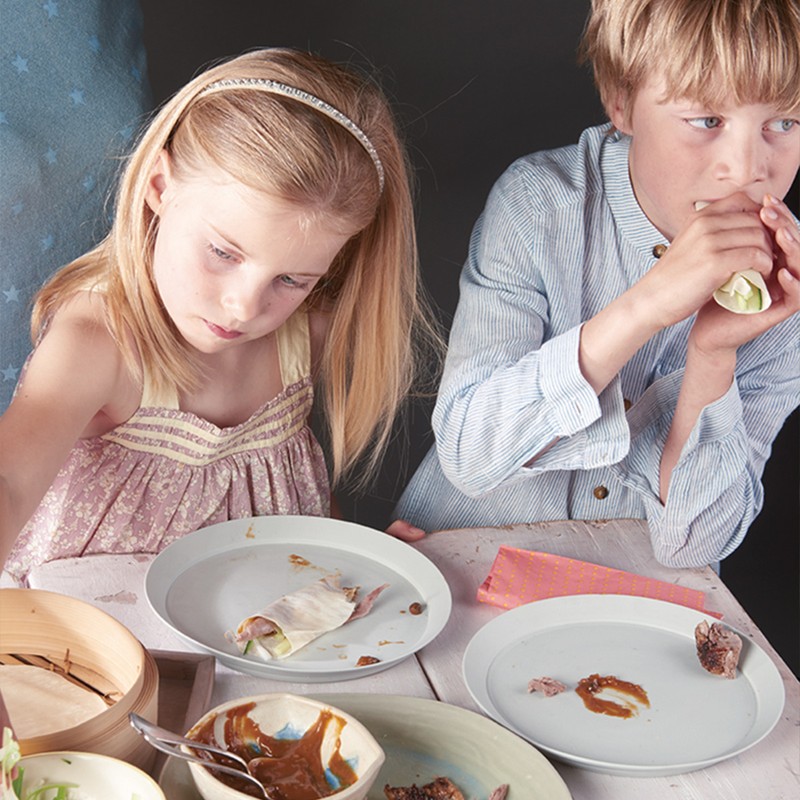10 Ways To Eat Healthier As A Family
Shop In Season
Do some research online or look through different cookbooks to see what fruit and veg is in season now. Or visit your local greengrocer or supermarket – usually the cheaper offerings are what’s in season now, as there’s an abundance. Eating seasonally not only saves you money, it means food is at its ripest and freshest, with the least amount of artificial help. When it’s in season, fruit and veg tastes so much better, meaning your family will enjoy it more and fill up on the good stuff. For example, strawberries taste so much better in June and July rather than when you buy a punnet in November. Right now, in the UK you can make the most of apples, clementines and kiwis, along with sprouts, cauliflower, leeks and earthy root vegetable like parsnips, turnips and beetroot.
Take Your Family Shopping With You
Talk to your children about what you’re looking at in the fruit and veg aisles. Let them choose what they would like to try. Giving them choice helps children to feel in control and builds their confidence to try new flavours. This also works with new recipes – let them flick through your favourite cookbook and tell you which dish they like the look of. It means they’ll be far more excited to eat it.
Get Creative With Vegetables
If you would like to cook and eat the same meal as your children, but fear they won’t enjoy the variety of vegetables, there are ways to encourage them to give the meal a try. Try offering new tastes and textures alongside foods that are already enjoyed by your family. For example, serve brussels sprouts alongside family favourites such as broccoli or carrots. This way you’re giving them the opportunity to try them and encouraging them to give it a go in a less daunting way, with no pressure for them to eat it. You can also try incorporating new veggies into recipes by chopping them very small and adding them to meals like lasagne, pasta dishes, pies or fritters to mellow the flavours.
Visit Waterstones.com
Eat Together As Much As Possible
Even if it’s just once a week, eating altogether will make a difference. I appreciate how hard it can be to all sit down at the table each evening and it’s not practical for everyone. But our little ones learn so much about eating from watching us enjoy our food. As much as you can, try and keep your children company at mealtimes, even if it's only you.
Make Mealtimes Enjoyable Occasions
So often I hear that mealtimes are battlegrounds and parents dread them. But sometimes, taking a step back and working out how you can make little tweaks to make those mealtimes enjoyable for kids can make all the difference and result in them actually wanting to be a part of mealtimes. Colourful tablecloths, fewer pressures to "eat up", playing some calming music or even trying out shared buffet-style meals like fajitas can go some way towards achieving this.
Add Extras To Bulk Out The Nutrients
Adding in extras like a handful of greens, a dollop of nut butter, some chopped nuts sprinkled on top or a spoon of pulses, for example, can seem like small additions, but they can help to add extra flavours, textures and nutrients into family meals. It's win-win.
Visit SRNutrition.co.uk
Talk About Food As A Family
I’m always trying to keep the ‘whys’ of what we eat easy to talk about around over the dinner table. It’s way easier to talk about vegetables and their benefits when your children know a bit about why that is.
Get Ahead
Batch cook at the weekend. Writing a weekly plan is always a pain, but it gives you so much headspace in the week, so it’s worth it. Make a double batch of a pot of chilli, ragu or stew over the weekend, and then freeze double portions, and have some in the fridge for the week. Make use of certain hacks such as chopping veg and freezing it, and have carrots, cucumber and peppers prepped in containers of water in the fridge, so they keep for longer and are ready to go. If you want smoothies at the ready, you can put the ingredients into portions in the freezer and just add milk as it goes into the blender.
Remember, It’s All About The Delivery
Incorporate vegetables into meals is all about how you serve it. Having a bowl of chopped veg on the table first, as you get lunch or supper ready, means they’ll be hungry and ready to munch without being forced. Fritters, bhajis and spiralised strings of veg added to pasta are all great ways to add different formats of the same veg, and a crispy mouthful of a fritter is a very different proposition to a boiled, soggy side of veg on a plate. Adding veg to smoothies also works well – frozen cauliflower is such a stealth hit.
Get Savvy About Organic Produce
Print out the ‘Clean 15’ list, which is produced by the non-profit EWG, and stick it on your fridge. It lists all the best produce that generally isn’t grown with pesticides, such as avocado, sweetcorn, aubergines, asparagus and mushrooms. For all food that isn’t grown organically, it will show you which ones are less affected by chemicals.
Here are a few of my favourite recipes…
Roast Tomato & Pecorini Pasta Bake
Visit Lizzie-Loves.com
DISCLAIMER: We endeavour to always credit the correct original source of every image we use. If you think a credit may be incorrect, please contact us at info@sheerluxe.com.
All products on this page have been selected by our editorial team, however we may make commission on some products.




/https%3A%2F%2Fsheerluxe.com%2Fsites%2Fsheerluxe%2Ffiles%2Fwebsite-images%2F2025%2F04%2Fnew-parenting-background-image.jpg?itok=au3AjSlw)